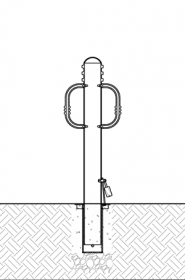Installing Removable Bike Bollards using Receivers with Lids
Reliance Foundry’s premier line of removable bike bollards offer bike storage that accommodates the changing needs of new streetscapes. The bike bollard is removed by unfastening a lock that connects the receiver’s lid to the bike bollard. The lid will then fall into place, covering the receiver. When a removable bike bollard is removed, the lid of the receiver can be closed to become flush with the surface grade. It is a convenient option that provides flexibility of access control and eliminates tripping hazards.
Removable bike bollards can restrict or limit access to particular areas while providing secure bike storage. It is important to note that with this installation method, bike bollards offer limited impact resistance.
PARTS LIST
|
# |
PART |
QTY |
|---|---|---|
|
1 |
Removable Bike Bollard |
1 |
|
2 |
Receiver |
1 |
|
3 |
Padlock (optional) |
1 |
INSTALLATION EQUIPMENT
|
Auger |
Chalk/Marker |
|
Dirt Tamper |
Level |
|
Measuring Tape |
|
NOTE
- To protect the finish, keep bike bollards in original packaging until the exact moment of installation.
- Handle with care to avoid scratching or damaging bike bollard surfaces as abrasions will lead to rust.
- Once scratched, bike bollards cannot be repaired to original form without re-finishing the entire surface.
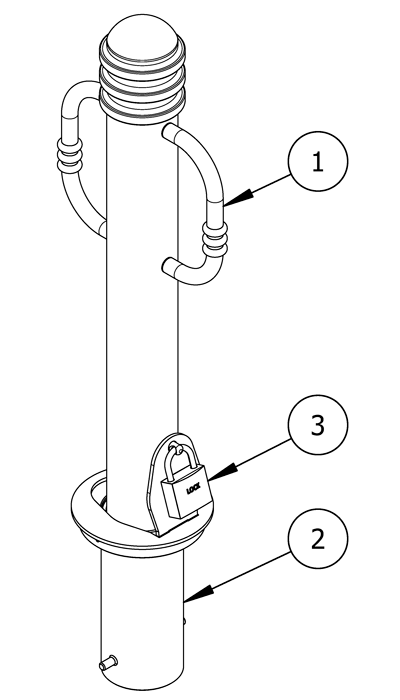
Before installation
Study the site plans
Site plans are generally created by the architect of the project.
Refer to site plans to locate the precise center point of each bike bollard.
Ensure that the plan coincides with the site and familiarize yourself with the intended arrangement of the bike bollards.
Check for hazards
Always check for hazards such as water pipes, gas lines, and underground wiring before digging.
Prepare the site for concrete
Please consult your local Building Code Department to determine the recommended digging depth below the frost line in your area. Choose this or 12″, whichever is greater. Then add a minimum 6″ for holding the drain rock.(1) This is your total digging depth.
The diameter of the hole should extend a minimum of 10″.
Note: If the recommended digging depth below the frost line is greater than the depth of the receiver, be sure to provide adequate drainage by piping through the concrete and connecting to the drain rock layer underneath.
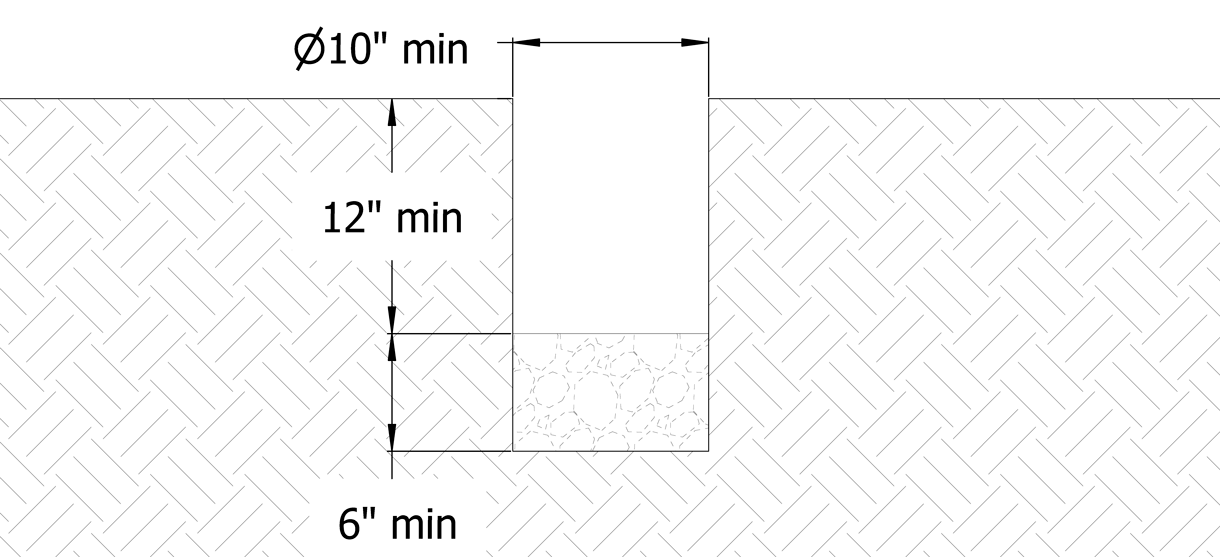
Dig the site
Center an auger on the installation mark and bore a hole to required measurements.
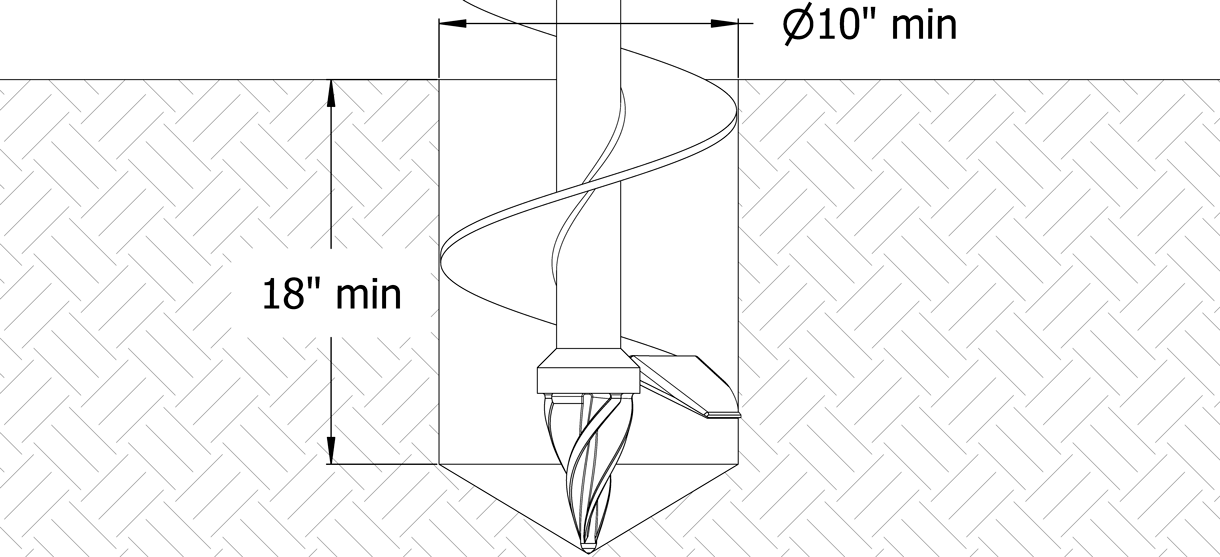
Ensure the area is properly formed to create a perimeter that will hold wet concrete.
Use a dirt tamper(2) to compact the soil below the intended surface.
Prepare the bike bollard and removable mount for designated location
Keep the bike bollard in its protective packaging.
Keep in mind that the receiver will be installed so that the bottom of the receiver plate is level with the finished surface of the concrete grade. This is recommended in order to create a slight berm with the concrete.
Add the drain rock
Add the drain rock to the installation site.
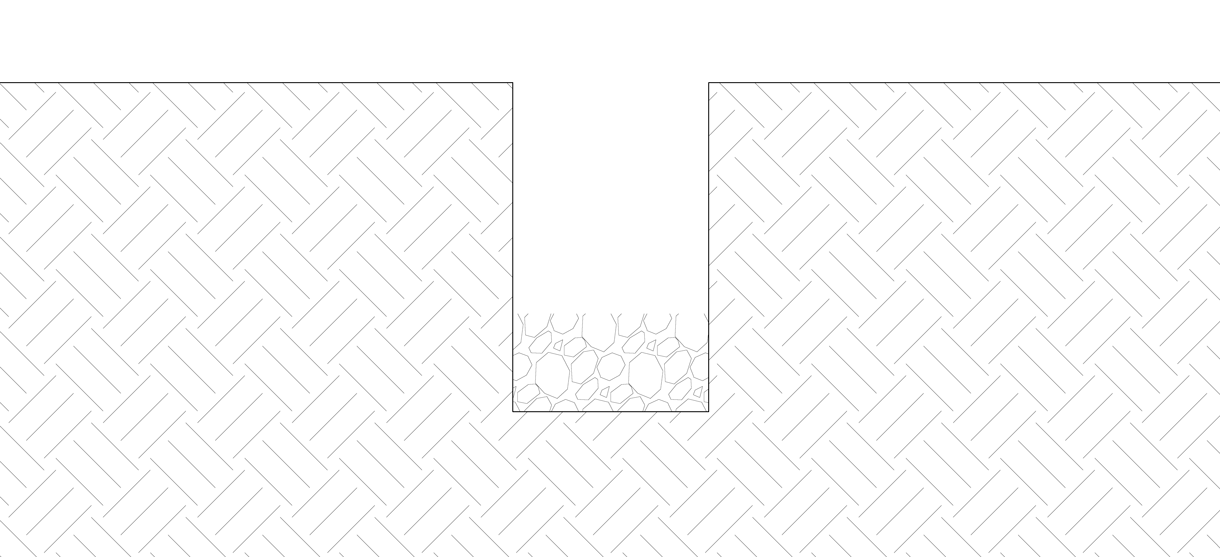
Pour the concrete
Mix the concrete
Ensure that the proper ratio of water and concrete mix is used.
The concrete should have a similar texture to moldable clay.
Place the receiver in designated location
Close the lid of the receiver and lower it into the designated location so that bottom of the receiver plate is level with the finished surface of the concrete grade. A slight berm is recommended.
Note: If necessary, temporarily insert the bike bollard (with packaging still on) into the receiver and use a level to ensure it is plumb. This will help to ensure the bollard is plumb to the surface before proceeding with pouring concrete.
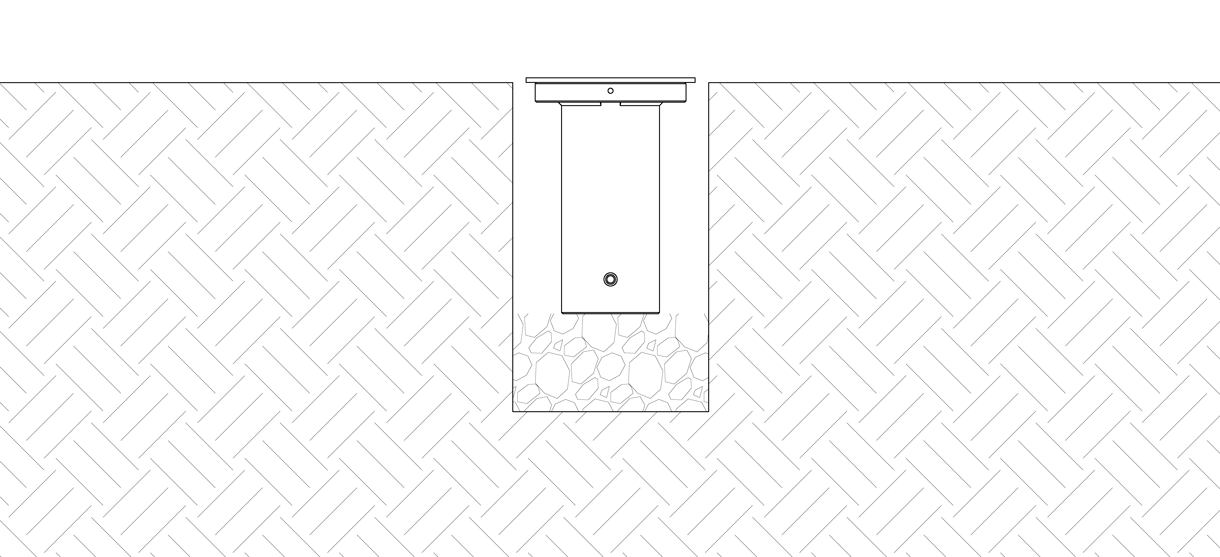
Be sure to orient the receiver in such a way that the padlock pin will point in the desired direction. It is critical that the orientation of all receivers is the same.
Pour the concrete
Note: If the recommended digging depth below the frost line is greater than the depth of the receiver, be sure to provide adequate drainage by piping through the concrete and connecting to the drain rock layer underneath.
Take care to pour the concrete evenly. The concrete should be slightly raised up towards the top edge of the receiver to create a slight berm.

Allow the concrete to cure
A minimum of 2–3 days should be given for concrete to cure before beginning construction projects on new concrete surfaces.
Note: Moisture in the environment and cool temperatures can significantly slow the process.
Install the bike bollard
Prepare the bike bollard
Ensure the concrete has cured.
Keep the bike bollard in its protective packaging. Carefully set the bike bollard near the installation site.
When ready to install, remove the protective packaging and lower it into the receiver.
Secure the bike bollard
Lift the lid of the receiver up to the stud. Attach the padlock and fasten.

Inspect
Inspect the installation
From a distance, examine the plane of view.
Ensure the bike bollard is plumb to the surface, and the surface is flat.
Check the bike bollard for any signs of surface damage
Abrasions should be covered as soon as possible to prevent rust and ensure the proper life of the bike bollard. For damage repair or other servicing needs, please contact Reliance Foundry’s sales department.
Care and maintenance
Reliance Foundry manufactures its products to the highest design standards to ensure their durability. Reliance Foundry’s bike bollards are finished with long-lasting powder coating. In most North American environments, routine inspections and cleaning will ensure that bike bollards retain their aesthetic appeal. Proper care and maintenance are required to maintain the finish and ensure a full service life.
1. Recommended depth for drain rock is a minimum of 6". Depth will also depend on local soil conditions, weather conditions, and engineering requirements.
2. Dirt tamping is not required if working on undisturbed soil.
